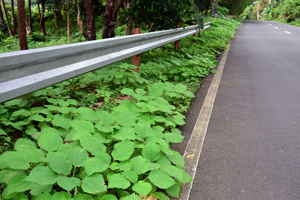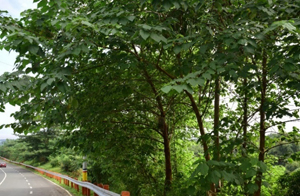 The invasive growth of paper mulberry tree (Broussonetia papyrifera (L.) L’Herit ex Vent) may soon come to an end through the project, “Processing and wood quality evaluation of paper mulberry for furniture, handicrafts and other by-products.”
The invasive growth of paper mulberry tree (Broussonetia papyrifera (L.) L’Herit ex Vent) may soon come to an end through the project, “Processing and wood quality evaluation of paper mulberry for furniture, handicrafts and other by-products.”
Funded by the council, the P1.5M project aims to establish potential use of paper mulberry wood as a strategy to control, if not regulate, its spread. This project will run for 18 months (1.5 years).
Paper mulberry can be classified as a large shrub or a small tree with a soft and brittle wood. Because of this, its timber has little or no commercial value other than for paper making, which was the reason for its introduction to the Philippines in 1935. However, it has spread since then to the Philippine archipelago.
The tropical climate of the Philippines makes it extremely susceptible to invasion of paper mulberry. It can grow fast and spread easily via seed dispersal, primarily through birds and other animals that eat the fruit. Due to its excessive growth, it has been considered as a type of weed badly affecting native flora in our forests.
 For. Pablito L. Alcachupas from the Forest Products Research and Development Institute (FPRDI) leads this project. The project team will conduct series of tests like sawmilling, veneering, seasoning, wood bending and machining in order to determine its wood density, shrinkage, and strength properties.
For. Pablito L. Alcachupas from the Forest Products Research and Development Institute (FPRDI) leads this project. The project team will conduct series of tests like sawmilling, veneering, seasoning, wood bending and machining in order to determine its wood density, shrinkage, and strength properties.
Classified under the strategic research and development banner program of the Philippine Council for Agriculture, Aquatic and Natural Resources Research and Development of the Department of Science and Technology (DOST-PCAARRD), this project will create better understanding of the basic characteristics of paper mulberry and how its use can be maximized. This will contribute to the cause of people living in the upland and communities that depend heavily on the forest and its resources. The results of the study can also provide more information on maximizing returns in converting its timber into various wood-based products like lumber, furniture, hand-made paper, charcoal, and pyroligneous liquor.
